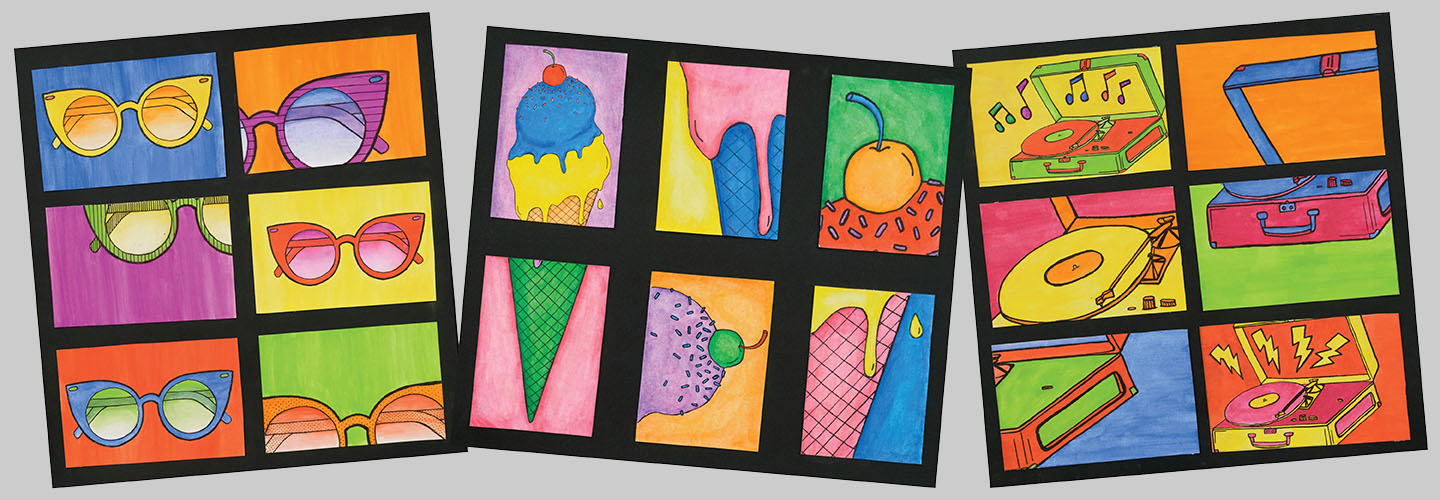You’ve seen how Pop artists like Andy Warhol made artworks featuring commonplace objects to share their ideas about contemporary culture. Now it’s your turn to choose an object, make a line drawing, and use repetition and variation to make a statement.
sketchbook
objects for drawing from observation (e.g., soup cans, cupcakes, fresh fruit/veggies, still life objects)
8.5"×11" drawing paper
pencils
black fine-tip markers
card stock printer paper (110 lb, white, letter size)
computer and scanner
printer
watercolor paint
variety of paintbrushes
scissors
double-sided tape
black poster paper/board for mounting

